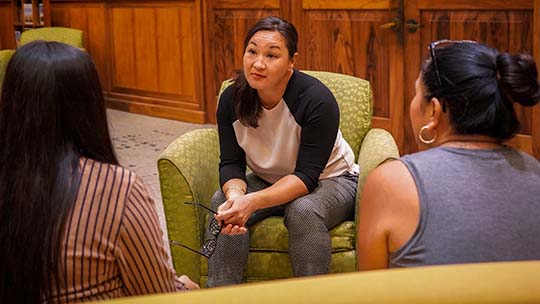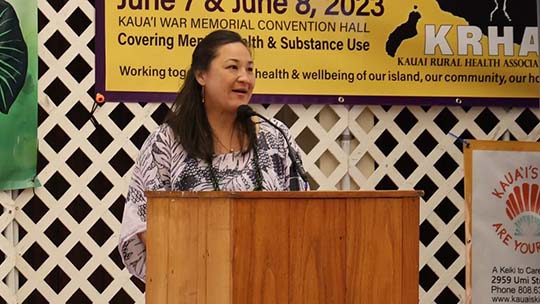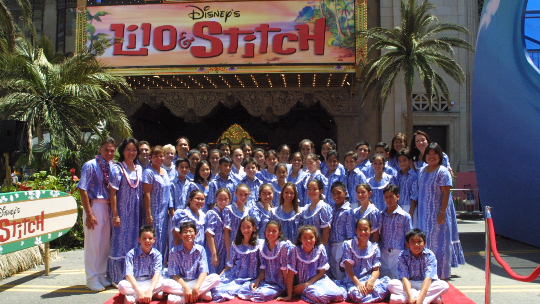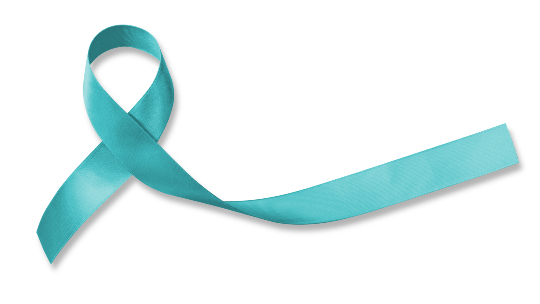On the early morning of Aug. 9, while Hawaii was processing the shock of the Maui wildfires that started the day before and grieving for Lahaina, Tia L.R. Hartsock got to work by coordinating a mental health response. The director of the newly created Office of Wellness and Resilience rallied a team of mental health professionals and community providers to start the healing process on Maui.
“In addition to caring for the survivors’ physical health, we needed to also take care of their mental and emotional health,” says Hartsock. “I was moved when I received more than 250 responses from people who were ready to help.”
Hartsock’s office is the first statewide office of its kind in the nation focused on trauma-informed care and other health and wellness issues. She brings to the job more than 20 years of mental health and criminal justice experience.
Since the office was created in 2023, she’s been working to improve the overall mental health of Hawaii as well as help people deal with trauma following the COVID-19 pandemic and Maui wildfires.
What has your office been doing to help Maui wildfire survivors?
We’ve convened regular Maui Coordinated Mental Health Response meetings, including mental health professionals, community organizations, and government employees, both on Maui and in other parts of the state. The meetings have been instrumental in having crisis services available for survivors, breaking down barriers, and sharing resources and lessons learned.
What kinds of lessons are you learning from the Maui wildfires?
The disaster is an example of a new type of collective trauma phenomenon called cascading trauma because it’s happened so close to the pandemic. We may see this complex trauma more as communities grapple with natural disasters in addition to trauma caused by people, such as mass violence.
During cascading trauma, some people may feel like it’s harder to get back to their “normal.” This type of trauma is just starting to be studied, but we can respond with what we know works to minimize trauma’s long-term effects. That includes more support and connection to culture and aina-based practices.

Tia Hartsock meets with her staff members at the State Capitol.
Can you explain trauma-informed care?
First, trauma-informed care is acknowledging that trauma is pervasive in communities. Secondly, it’s understanding how traumatic events impact a person’s life. And thirdly, it’s engaging and working with people in ways that won’t trigger and retraumatize them.
What are the impacts that your office is dealing with related to COVID-19?
One of the impacts of the pandemic was the mass exodus of people from the workforce. Now, it’s harder to recruit and keep employees who are healthy and take a balanced perspective. The workforce is exhausted. They’re traumatized. They’re retiring early. The remaining employees are working extra shifts to make up for the staff shortage. This impacts family life.
So we’re looking at workforce wellness. We’re doing surveys that have never been done on a statewide level. We’re asking workers how they’re doing. And we’re engaging employers to find out what their needs are to take care of themselves and employees.
Who can benefit from your office?
Our office focuses on everyone from keiki to kupuna. We’re looking at different life stages to identify and build wellness. We’re coordinating trauma-informed care efforts to conduct training and provide technical assistance with the goal of building the workforce and retaining local knowledge and talent.
The hope is that there won’t be a need to rely on government and for social services to solve all the problems. We want people to create their own natural support and connections so they can have something that’s bigger than themselves.
It’s not one government agency’s responsibility to solve community problems. It should be a more collaborative approach. This is a shared kuleana across the state. We need everyone to work together.

Hartsock giving a speech at the Ola Pono O Kauai Conference.
How would you describe the existing support for people in Hawaii?
There are many grassroots community organizations that are doing amazing work. How do we highlight and uplift that work? How do we support and engage those efforts? It can be through funding, partnering, and organizing opportunities to coordinate and share resources. We’re looking at all of that. We’re so lucky to live in a state where the administration is focused on improving mental health and well-being. How great is that? What an amazing opportunity for us to affect change. is
To learn more about the Office of Wellness and Resilience, call 808-586-0034 or email gov.owr@hawaii.gov.
Hawaii CARES
Do you have moments when you’re not feeling like yourself? Here are some self-care tips:
- Take time to rest.
- Connect with a loved one and talk about how you’re feeling.
- Spend time in nature or do something that helps you relax.
If you need someone to talk to or if you or someone you know is in crisis, call or text Hawaii CARES at 988.
Photos courtesy Tia Hartsock
Illustration by Garry Ono
SP24F




